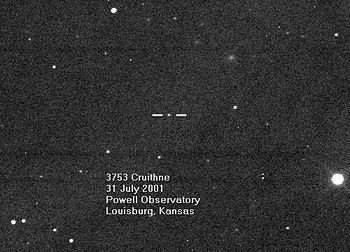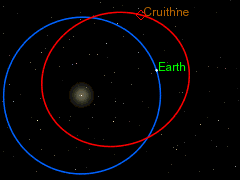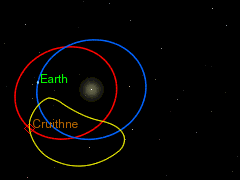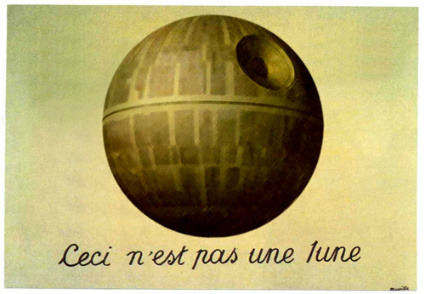http://en.wikipedia.org/wiki/433_Eros wrote:
<<433 Eros is a near-Earth asteroid (NEA) discovered in 1898, and the first asteroid to be orbited by a probe (in 2000). It is an
S-type asteroid approximately 34.4×11.2×11.2 km in size, the second-largest NEA after 1036 Ganymed, and belongs to the Amor group. Its synodic period of over 846 earth days is among the largest of any body in the Solar System. Eros was one of the first asteroids to be visited by a spacecraft, and the first to be orbited and soft-landed on. NASA spacecraft NEAR Shoemaker entered orbit around Eros in 2000, and came to rest on its surface in 2001. [Erotian escape velocity = 10.3 m/s] On January 31, 2012, Eros passed the Earth at 0.17867 AU (26.729 Gm), about 70 times the distance to the Moon, with a visual magnitude of +8.1. During rare oppositions, every 81 years, such as in 1975 and 2056, Eros can reach a magnitude of +7.0, which is brighter than Neptune and brighter than any main-belt asteroid except 4 Vesta and, rarely, 2 Pallas and 7 Iris.
As one of the larger near-Earth asteroids (NEAs), Eros has played a significant role in history. It was discovered on the same night (13 August 1898) by Gustav Witt in Berlin and Auguste Charlois at Nice. Witt was taking a 2-hour exposure of Beta Aquarii to secure astrometric positions of asteroid 185 Eunike. During the opposition of 1900–1901, a worldwide program was launched to make parallax measurements of the asteroid to determine the solar parallax (or distance to the sun), with the results published in 1910 by Arthur Hinks of Cambridge. A similar program was then carried out, during a closer approach, in 1930–1931 by Harold Spencer Jones. The value obtained by this program was considered definitive until 1968, when greater faith was placed in radar and dynamical parallax methods.
Eros is a Mars-crosser asteroid, the first known to come within the orbit of Mars. Objects in such an orbit can remain there for only a few hundred million years before the orbit is perturbed by gravitational interactions. Dynamical integrations suggest that Eros may evolve into an Earth-crosser within as short an interval as 2 million years. It is a potential Earth impactor, believed to be larger than the impactor that created the Chicxulub Crater that led to the extinction of the dinosaurs.
Erotian surface gravity varies greatly, since Eros is not a sphere but an elongated peanut-shaped (or potato- or shoe-shaped) object. The daytime temperature on Eros can reach about 100 °C at perihelion. Nighttime measurements fall near -150 °C. Eros's density is 2,400 kg/m3, about the same as the density of Earth's crust. It rotates once every 5.27 hours.
NEAR scientists have found that most of the larger rocks strewn across Eros were ejected from a single crater in a meteor collision approximately 1 billion years ago. This impact may also be responsible for the 40 percent of the Erotian surface that is devoid of craters smaller than 0.5 kilometers across. It was originally thought that the debris thrown up by the collision filled in the smaller craters. An analysis of crater densities over the surface indicates that the areas with lower crater density are within 9 kilometers of the impact point. Some of the lower density areas were found on the opposite side of the asteroid but still within 9 kilometers. It is theorized that seismic shockwaves propagated through the asteroid, shaking smaller craters into rubble.
In an experimental legal case, Eros was claimed as property by Gregory W. Nemitz of OrbDev. Nemitz argued that, according to the homestead principle, he had the right to claim ownership of any celestial body that he made use of; he claimed he had designated Eros a spacecraft parking facility and wished to charge NASA a parking and storage fee of twenty cents per year for NEAR Shoemaker. An expert in extraterrestrial real estate issues, Virgiliu Pop, responded by using the same novelty-deed registry Nemitz had used for Eros to claim ownership of the Sun, stating: "
I, for one, intended this move only to show how ridiculous a property rights system in outer space would be if it were to be based solely on claim unsubstantiated by any actual possession.">>
 Jupiter and the Moons of Earth
Jupiter and the Moons of Earth





